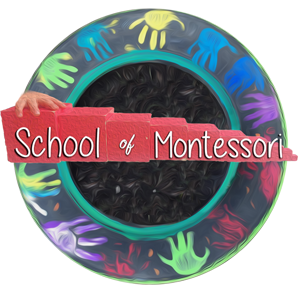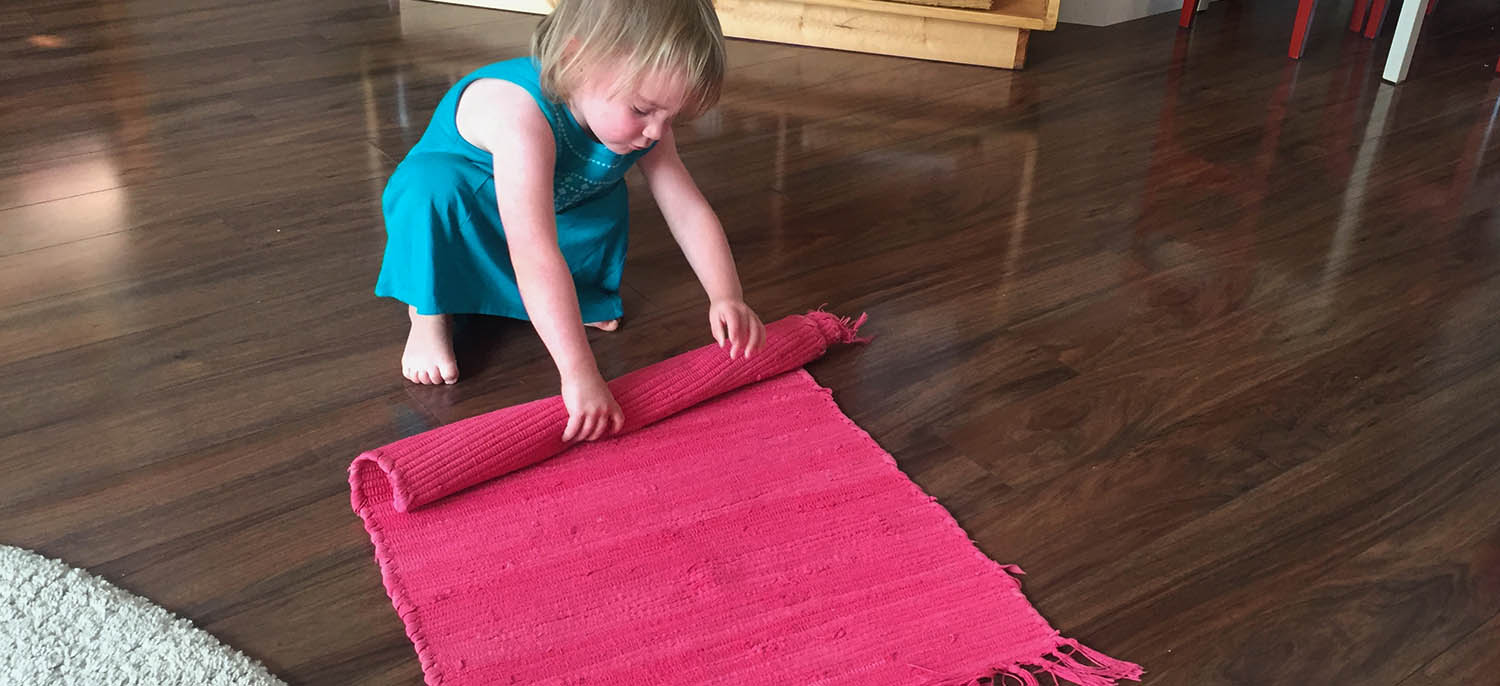In the Montessori environment, if a table is unavailable or the work is too big to fit on a table, then students will first start by choosing a space and unrolling a rug. The rug is to be treated in the same manner as table work, and should be considered an extension of that space. The child uses the rug for larger materials such as the brown stair. Students are shown how to carefully unroll the rug, and how to replace it in the basket by rolling it back up, using the “C grip” in the middle of the rug. The child learns how to smooth the ends, and check for straight edges when rolled up properly. Often, children will express how beautiful the rug looks, before they place it back in the basket. Rugs also need to be replaced so that they can be available for another child who would like to choose a rug work, so this activity falls under areas of care of environment, and grace and courtesy.
Age
- 2.5 and Older
Category
Control of Movement
Prerequisites
None
Materials
- Plain Rug
- The rug should be 40″ x 24″ to fit the longest piece of Montessori equipment.
- Low Pile
- Pastel Color
- Washable
- Sturdy back, so rug will stand when rolled
- Rug Rack or Container
Activity Area
- Individual
- Small Group
Language
- Rug
- Rug Rack
- Perimeter
- Balance
- Smooth
- Equipment
- Horizontal
- Vertical
Points of Interest
- Carrying the rug close to the body in a vertical manner.
- finding an empty space for the rug.
- Looking over shoulder to assure that area is still clear.
- Rolling and unrolling until it just touches the knees.
- Seeing small hole at the end of the rug.
- Seeing that outstretched rug is in a pleasant relationship to the room.
Control of Error
- Dropping rug when carrying.
- Seeing that rug is uneven on sides.
- Feeling that hole is too big.
- Seeing outside edge of rug curled.
- Seeing wrong edge of rug being folded.
- Seeing or feeling bumps under rug.
- Seeing footprints or other dirt on rug.
- Seeing rug fall out of rack.
Direct Aims
- To increase attention and concentration spans.
- To develop hand-eye coordination and muscular control.
- To foster child’s awareness of his position in space.
- To prepare child for working on the floor.
- To develop muscles in the wrist and hands (writing)
Indirect Aims
- To prepare child for writing.
Aditional Exercises
- Performing exercises in walking around the rug.
- Performing exercises in walking up to a rug and stopping.
- Carrying objects around rug.
- Rolling mats for tabletop exercises.
Extensions
- Rolling art work or scrolls.
- Kneading clay.
About Instructor


